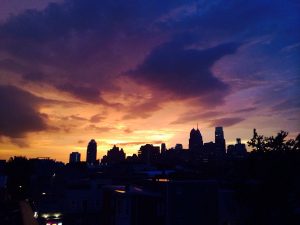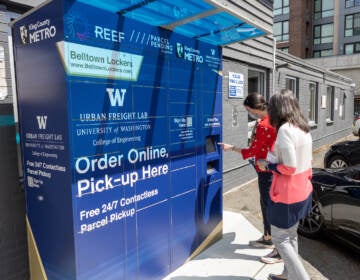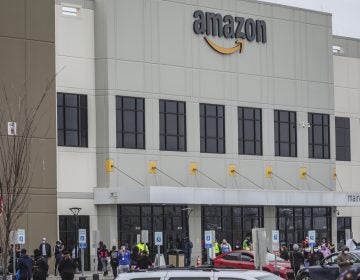‘Excellent’ transportation network driving force behind Philly’s pitch to Amazon
Amazon says it wants a readily available site, with a good transportation network and room to grow. Here’s how Philly stacks up.
Listen 5:07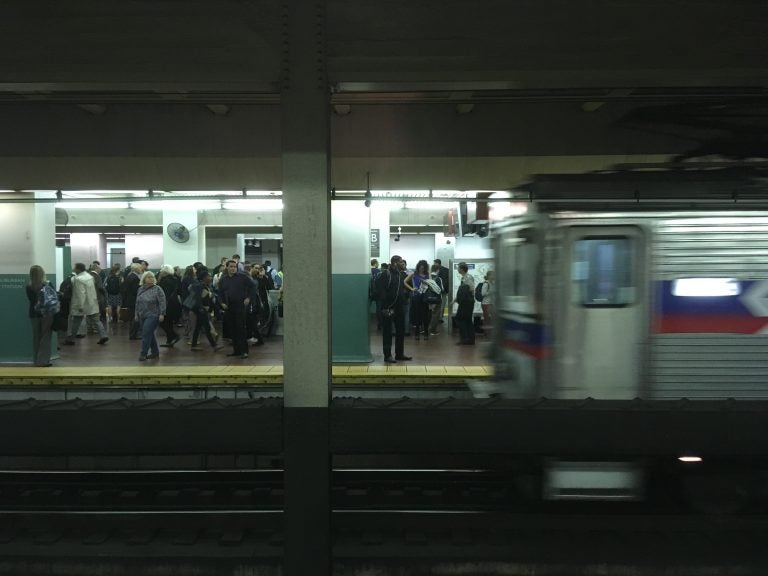
The 5:05 Express to Norristown arrives at Suburban Station. (Jim Saksa/WHYY)
Like nearly every other city in North America, Philadelphia is putting the final touches on its bid to convince Amazon to build its second headquarters here ahead of Thursday’s deadline. The tech giant is making big promises to the winner: a $5 billion dollar investment and 50,000 high-paying jobs. In a series this week, PlanPhilly is using Amazon’s request for proposals (RFP) as a lens to examine the costs and benefits of doing business in our region.
Today: Amazon says it wants a place with a good transportation network, where it’ll be easy to get to and around its campus and to other cities. The company also calls for a location it can begin to move into quickly, but also has the room to grow into a massive, unified campus. Are those things Philly can provide?
—
If you’ve ever sat in traffic on the Schuylkill Expressway or squeezed onto an already packed Regional Rail train or watched helplessly as a full bus skipped your stop, you might have asked yourself: Where did all these people come from?
Kvetching about traffic is one of those cathartic pleasures of living in and around a city. It’s a matter of perverse regional pride to proclaim your area’s drivers the worst, as nearly every city does, pointing to the populace’s particularly peculiar habits as proof.
While traffic is no fun in nearly all cities and bad traffic brings out the worst behavior in drivers everywhere, Philadelphia’s roadways and railways are no more clogged than any other cities. In fact, quite the opposite.
“I’d rate our overall transportation network as excellent,” said Greg Krykewycz, associate director of transportation planning at the Delaware Valley Regional Planning Commission (DVRPC). “Especially in comparison to many of our peer cities and regions across the country, our multimodal infrastructure is pretty well-advanced. We got a rail transit system that many other regions are spending billions and billions of dollars to build out that we’ve inherited over the last 100 years.”
That rail system helps keep cars off the road, which means congestion isn’t as bad in the Delaware Valley as it is in many parts of the nation.
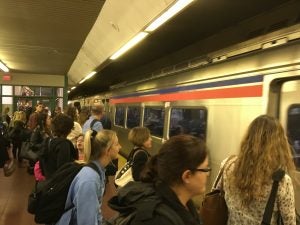
According to census data compiled by the DVRPC, the average commute time in the greater Philadelphia region is 29.1 minutes, the tenth highest among the 25 largest metro areas. That may not sound all that great, but commute times tend to reflect the region’s population size — at 35.8 minutes, New York City commuters face the longest average trip to work.
A lot of transportation boils down to simple geometry. The shortest distance between two points is a straight line and Philadelphia is full of them, thanks to the grid of streets designed by William Penn and his surveyor, Thomas Holme. Philadelphia’s short, simple blocks lend the city peerless walkability. That’s why 8.3 percent of Philadelphians walk to work, compared to 2.7 percent across the U.S. In some Center City neighborhoods, more than 40% of residents walk to work.
That’s a feather in Philly’s cap with Amazon, which brags in employee recruitment videos that 20 percent of its Seattle workforce walks to work.
That short block structure, plus the city’s relative lack of hills, also makes it easier to bike to work. Philadelphia likes to brag that it has the highest percentage of commuters by bike of any big city. That’s certainly true: At 2.2 percent, Philly has the rest of the largest ten U.S. cities beat. But Philadelphia falls way behind some smaller cities that have invested more in bike lanes and other streetscape improvements that make cycling safer, including Portland, San Francisco, Washington D.C. and Seattle Philadelphia’s considerable amount of bikelash certainly won’t help it attract health-conscious and outdoorsy companies like Amazon, which built bike lanes near to headquarters in Seattle.
Could Philly handle an extra 50,000 commuters?
All this adds up to less clogged roads. According to Texas A&M’s Transportation Institute, Philadelphia ranks 9th among big cities on time spent in gridlock, at 48 hours a year. While that may sound bad, the big city average is 55, and in notoriously gridlocked Washington D.C. (no pun intended), it’s 82 hours a year.
So, jaded drivers of Philly: Like the grass, the traffic lights only seem to be greener on the other side.
But will that remain the case if Amazon comes to town with 50,000 employees in tow? Can Philadelphia’s transportation network handle that kind of influx?
“We can definitely handle it,” said Krykewycz.
Philadelphia has put forth three potential sites for Amazon’s massive campus: the Navy Yard, Schuylkill Yards and uCity Square. All of those are in already job-dense areas, notes Kyrkewycz.
“It would probably not look or feel a whole heck of a lot different than other really built-out parts of our central business district — Center City, University City — we’ve got those job densities already,” Kyrkewycz said.
Center City already accommodates 292,000 workers and University City has another 77,000, plus another 44,000 college students. You wouldn’t really notice the extra Amazon workers in the city’s downtown core. And the Navy Yard has been redesigned and built specifically to hold huge corporate offices in a semi-urban setting.
Philadelphia may be unique among major contenders for Amazon’s second headquarters in being able to offer not just one ready-to-go site large enough to accommodate its immense campus, but three.
The Navy Yard, Schuylkill Yards and uCity Square are all ongoing development projects in the kind of transportation-rich areas Amazon has identified.
Comcast times seven
Amazon wants to build a massive headquarters totaling eight million square feet of office space to match its 33-building campus in Seattle. To put that in perspective, imagine Philly’s tallest building, the Comcast Center. Now imagine building seven more right next to it, filling the area between 16th and 18th Streets, Arch Street to Chestnut.
Finding that kind of space is hard no matter where you are, but it’s particularly difficult when you add on requirements for good transit connectivity. Plus, Amazon wants to move in almost immediately, calling for 500,000 square feet of office space ready for move-in by 2019.
Meeting such a short timeframe requires a location that has at least already begun the often agonizingly slow, frontend work in real estate development: site acquisition, zoning and permitting.
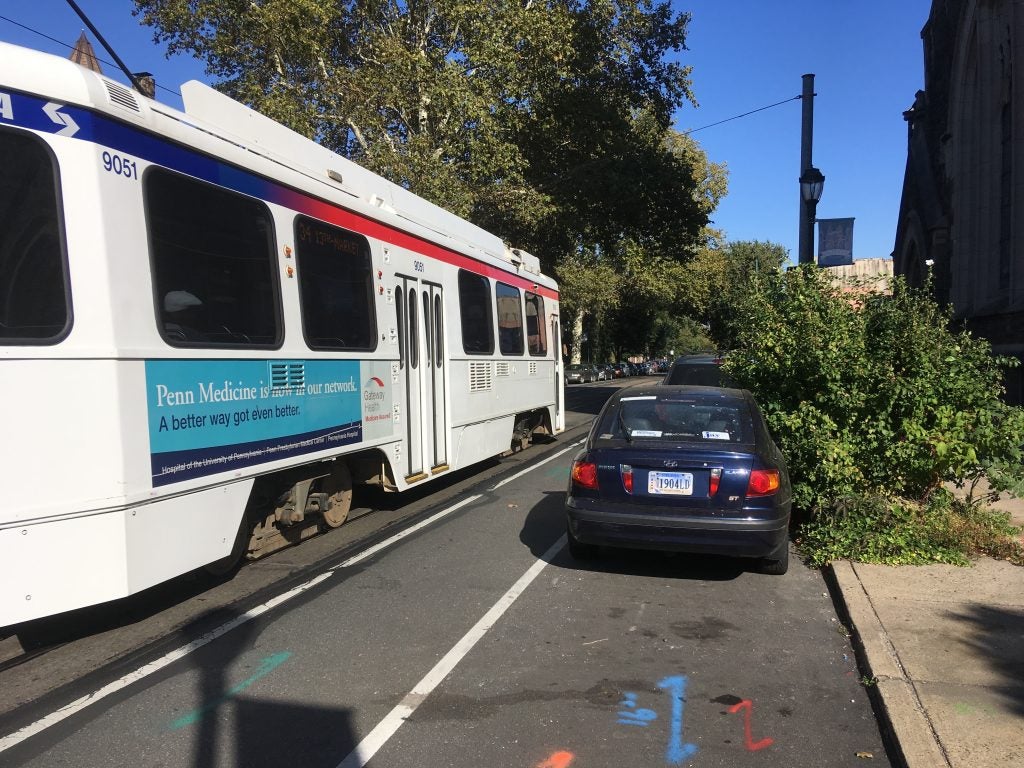
That’s already happened at these three sites. Each one is effectively held by a single owner or joint venture. That means Amazon would have just one negotiating team to haggle with, eliminating the risk of holdouts who could derail a deal by refusing to sell or demanding an excessively high price. In fact, if Amazon picked a site that still required assembly — buying up of nearby parcels to provide enough space to accommodate its huge office park — it would all but ensure a lot of time spent at the bargaining table offering huge premiums for small bits of land.
Schuylkill Yards is a joint venture between Brandywine Realty Trust and Drexel University with plans already in place for 8 million square feet of office space. The space, all already under the developer’s’ control and literally across the street from 30th Street Station, was recently rezoned to allow construction of skyscrapers and a community benefits agreement is in place with the neighboring communities. In terms of geography and logistics, Schuylkill Yards offers everything Amazon says it wants in a ready-to-go package.
Similarly, the Navy Yard provides a huge amount of unused space for Amazon — or any other company — amid the dozens of companies that have moved there in recent years. Only about half of the 1,200-acre space has been developed so far. As with Schuylkill Yards, Amazon would be negotiating with a single joint venture — PIDC and Liberty Property Trust — and most of the zoning and permitting requirements have been handled already. While the Navy Yard lacks great transit options and easy walkability, SEPTA is currently studying the feasibility of extending the Broad Street Line (or, as a cheaper alternative, increasing the number of buses) and PIDC has been pursuing permission from the Navy to build residential buildings on the former military base.
The uCity Square project, under the auspices of Wexford Science & Technology and University City Science Center, is currently projected to add 4 million square feet of office space along Market Street between 34th and 39 Streets. Still, the site could ramp up to Amazon’s specs with relative ease.
Compare this with Philadelphia’s competition. Boston’s commercial districts are already overcrowded. In Chicago, builders have pushed ahead rushed plans for large development sites that haven’t had their disparate parcels consolidated into a single property yet or obtained the necessary zoning changes. Other cities also face apparent geographic deficiencies: New York City and Austin lack readily available downtown space; Los Angeles, Atlanta and Detroit suffer from want of transit.
All of Philly’s sites are in place in large part because of some fortuitous timing: the city has been growing slowly but steadily, both in terms of jobs and population, for the past decade after a half century of decline. That long migration out of the city opened up space for these developers, and demand for downtown office space has finally hit the point where they are ready to build.
Over the last decade, Philadelphia has added around 40,000 jobs without a significant impact on commute times. The region’s network of highways was largely designed back when city planners assumed Philadelphia would grow to over 2 million people. Instead, it shrunk for nearly fifty years straight, down to 1.5 million, before climbing back up in 2006. Now Philadelphia’s home to 1.6 million and another 4.4 million live just beyond its borders in the Metropolitan Statistical Area.
That’s a lot of people — the 7th largest MSA in the nation — in a fairly large area. But the PATCO high speed line, SEPTA’s Regional Rail and the region’s intercity highways stitch the counties together into a unified whole. That effectively shrinks the region and widens the potential labor pool for employers like Amazon, said Andrew Stober, vice president for planning and economic development at the University City District.
“Almost 60 percent of the region’s population can get [to University City] on transit in an hour,” said Stober. “No other place in America comes even close.”
Ninety percent of the region can get to University City in under an hour by car, Stober added. The only regions that can match that are relatively low population, car-dependent areas like North Carolina’s Research Triangle, Atlanta and Austin.
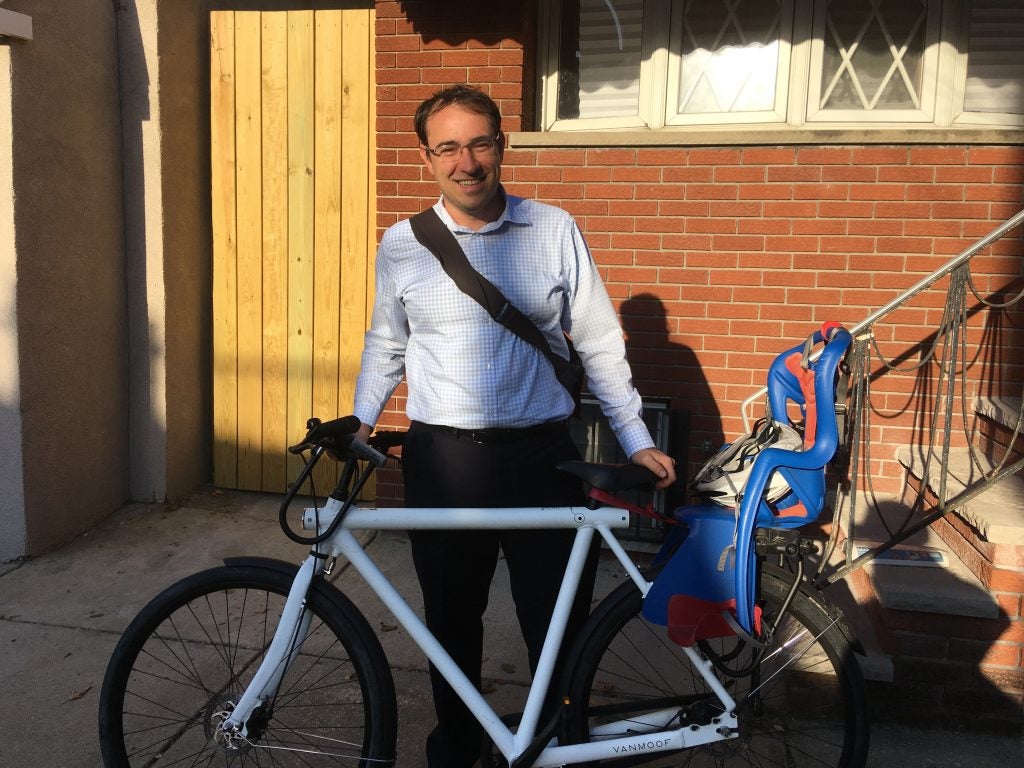
“In terms of access, whether walking, biking, in transit or a car, Philadelphia beats everywhere on the East Coast and everywhere in the South and almost everywhere in the nation,” argued Stober, a New York native who came to Philly by way of Boston.
Stober, an airplane geek who proudly shows off the multiple flight tracker apps on his phone, is quick to add that Philadelphia International Airport provides daily flights to Seattle and San Francisco — a requirement listed in Amazon’s RFP. The company also asked for flights to New York City and Washington D.C., but it’s safe to assume Amazon executives would settle — prefer, more likely — the train. Amtrak runs multiple trains every hour to both cities — you can get to Manhattan in 90 minutes and to DC in under two hours.
If Amazon picked Philadelphia,the city’s transportation systems would need to make some adjustments: a new bus route, maybe some extra trains, maybe some more. But, it’s doable, said the DVRPC’s Kyrkewycz.
“That’d be a tremendous amount of growth in a concentrated place in our region and we want to be able to plan for that,” he said. But that’s “a good problem to have, right?”
WHYY is your source for fact-based, in-depth journalism and information. As a nonprofit organization, we rely on financial support from readers like you. Please give today.




